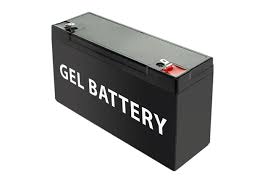Gel Batteries: Harnessing the Power of Stability and Longevity
In the realm of battery technology, gel batteries have gained considerable attention for their exceptional stability, longevity, and maintenance-free operation. These specialized sealed lead-acid batteries utilize gel electrolyte to deliver reliable power for a wide range of applications. In this article, we will explore the unique characteristics, advantages, and applications of gel batteries, shedding light on their significance in the world of energy storage.
Understanding Gel Batteries:
Gel batteries, also known as gel cell batteries, are a type of valve-regulated lead-acid (VRLA) battery. They are constructed using a gel electrolyte, which consists of sulfuric acid mixed with silica fume to form a gel-like substance. The gel electrolyte immobilizes the acid, preventing it from spilling or leaking even if the battery is tipped or damaged.
Key Features and Benefits:
- Enhanced Stability: One of the notable features of gel batteries is their exceptional stability. The gel electrolyte provides a robust and solid structure that helps to withstand vibration, shocks, and harsh operating conditions. This makes them an ideal choice for applications where stability and reliability are crucial.
- Maintenance-Free Operation: Gel batteries are designed for hassle-free operation. Since the gel electrolyte is immobilized, there is no need for regular maintenance such as checking or replenishing the electrolyte levels. This feature makes gel batteries convenient and user-friendly, saving time and effort.
- Deep Discharge Capability: Gel batteries have a high tolerance for deep discharges, allowing them to be discharged to low levels without significant performance degradation. This deep cycling capability makes them suitable for applications that require sustained power delivery over an extended period, such as renewable energy systems or off-grid setups.
- Longevity and Cycle Life: Gel batteries are known for their extended cycle life and durability. With proper care and maintenance, they can provide a long service life, making them a cost-effective energy storage solution in the long run. The gel electrolyte helps to minimize plate corrosion and degradation, enhancing the battery’s overall lifespan.
- Safety and Environmental Friendliness: Gel batteries are considered a safer alternative to traditional flooded lead-acid batteries. The sealed construction prevents acid leakage, making them spill-proof and safe to handle. Additionally, gel batteries are relatively more environmentally friendly as they emit fewer harmful gases during charging and discharging.
Applications of Gel Batteries:
Gel batteries find applications in various industries and scenarios. Some of the common uses include:
- Renewable Energy Systems: Gel batteries are widely used in solar power systems, wind energy systems, and off-grid installations to store the generated energy for later use. Their deep discharge capability and long cycle life make them suitable for sustainable energy applications.
- Telecommunications: Gel batteries are often used in telecommunications infrastructure, providing backup power for critical communication equipment during power outages.
- Medical Equipment: Gel batteries are employed in medical devices and equipment that require a stable and reliable power source, such as mobile clinics, patient monitors, and emergency power backups.
- Mobility and Recreation: Gel batteries power electric mobility devices such as scooters, wheelchairs, and golf carts, providing reliable and consistent energy for extended use. They are also utilized in recreational vehicles (RVs) and boats, ensuring reliable power for lighting, appliances, and entertainment systems.
Proper Care and Maintenance:
To maximize the performance and lifespan of gel batteries, it is important to follow proper care and maintenance practices. Here are some guidelines:
- Ensure that the gel battery is charged using a compatible charger specifically designed for gel batteries. Avoid overcharging or undercharging, as it can affect the battery’s performance and lifespan.
- Regularly inspect the battery terminals and connections for corrosion or loose connections. Clean and tighten them as needed.
- Store the gel battery in a cool and dry location to avoid exposure to extreme temperatures.
- If the battery is not in use for an extended period, it is advisable to periodically recharge it to prevent self-discharge and maintain optimal performance.
Conclusion:
Gel batteries offer a reliable and long-lasting power solution for a wide range of applications. With their stability, deep discharge capability, and maintenance-free operation, gel batteries have become a preferred choice for those seeking a dependable energy storage option. Whether you’re powering renewable energy systems, telecommunications infrastructure, or mobility devices, gel batteries provide the reliability and longevity needed for uninterrupted power. Embrace the power of gel batteries and unlock a world of stability and efficiency in your energy storage endeavors.
